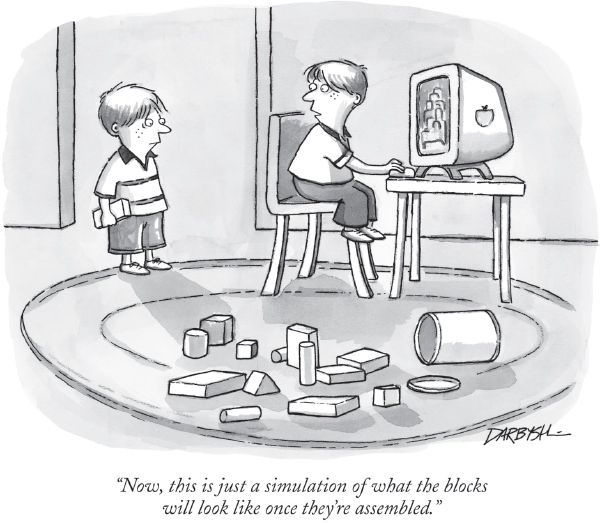CHAPTER 2
AN INTRODUCTION TO SYSTEM CONCEPTS AND SYSTEMS ARCHITECTURE

© C. Covert Darbyshire/The New Yorker Collection/www.cartoonbank.com
2.0 INTRODUCTION
In this book, we discuss systems: computer systems, operating systems, file systems, input/output (I/O) (sub)systems, network systems, and more. Each of these same systems is also an element with a major role in the information technology (IT) systems that form the backbone of modern organizations. Indeed, these elements—computer hardware, software, data, and communication—together represent the infrastructure of every IT system. If we are to understand the various types of systems that are the focus of this book, it is important that we first understand the concept of “system” itself, and, then, equally important, the basic architectures of the IT systems that use these elements. Only then is it possible to see clearly the role of the various system elements in the larger IT picture as we visit each in turn.
Use of the word “system” is obviously not unique to IT. In our daily lives, too, we often use the word “system” to describe things in everyday language. Our homes have electrical systems, plumbing systems, heating and air conditioning systems, and maybe for some, even, home theatre systems. There are ignition, braking, fuel, exhaust, and electrical systems in our cars. Our cities have water systems, sewer systems, and ...
Get The Architecture of Computer Hardware, Systems Software, & Networking: An Information Technology Approach, 5th Edition now with the O’Reilly learning platform.
O’Reilly members experience books, live events, courses curated by job role, and more from O’Reilly and nearly 200 top publishers.

